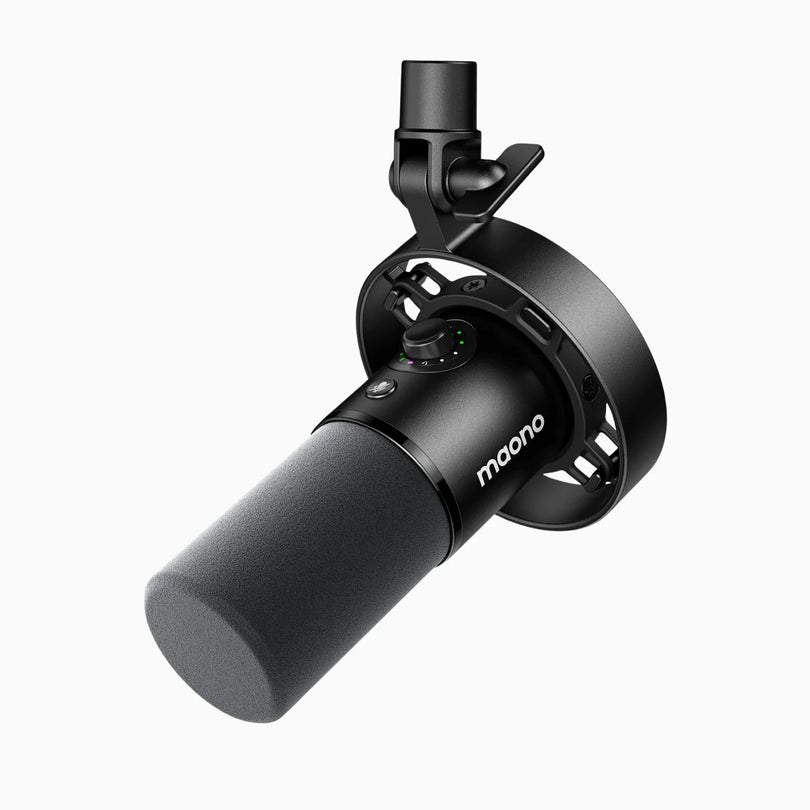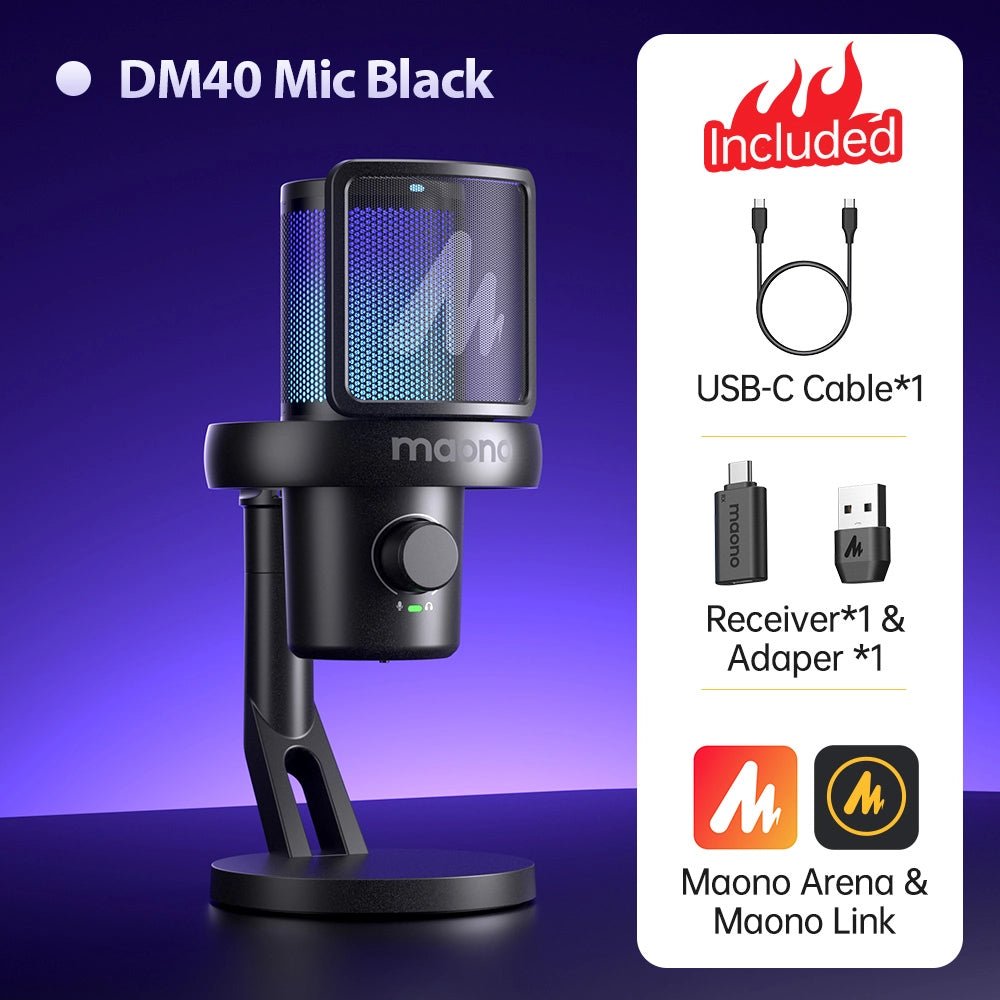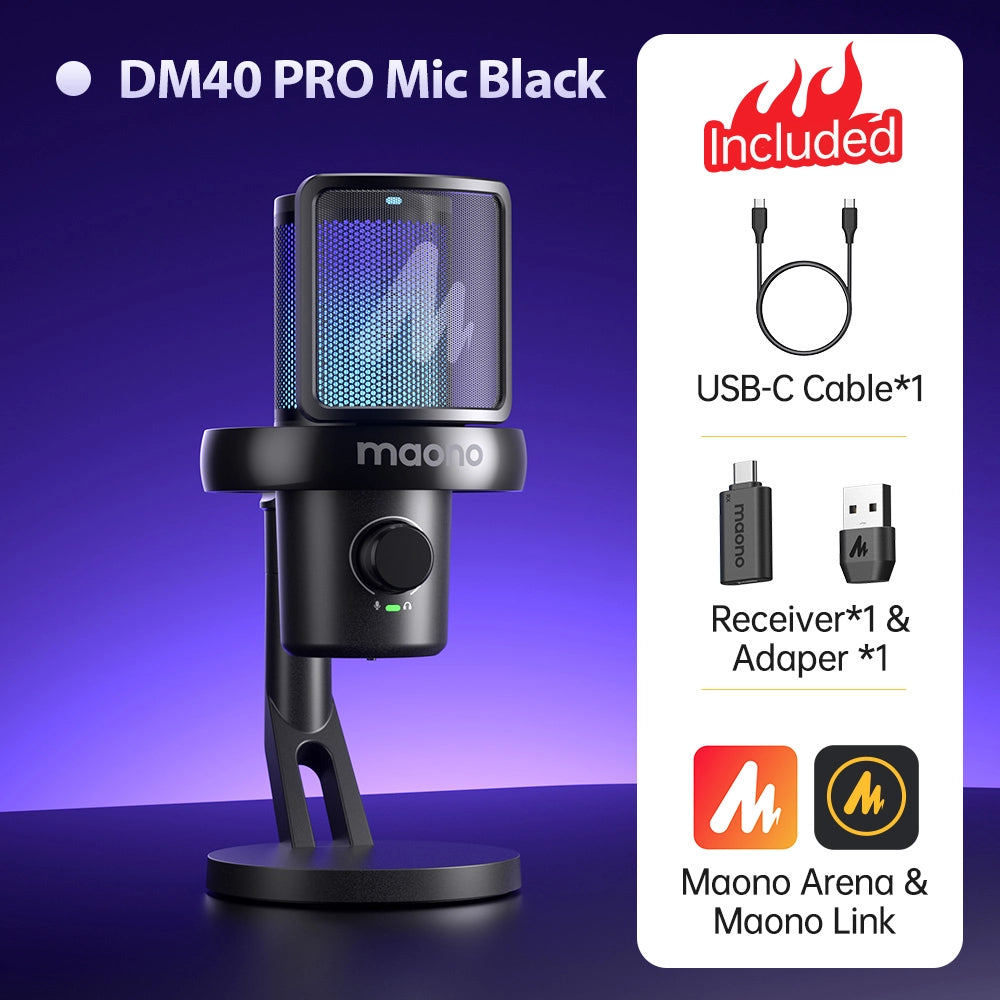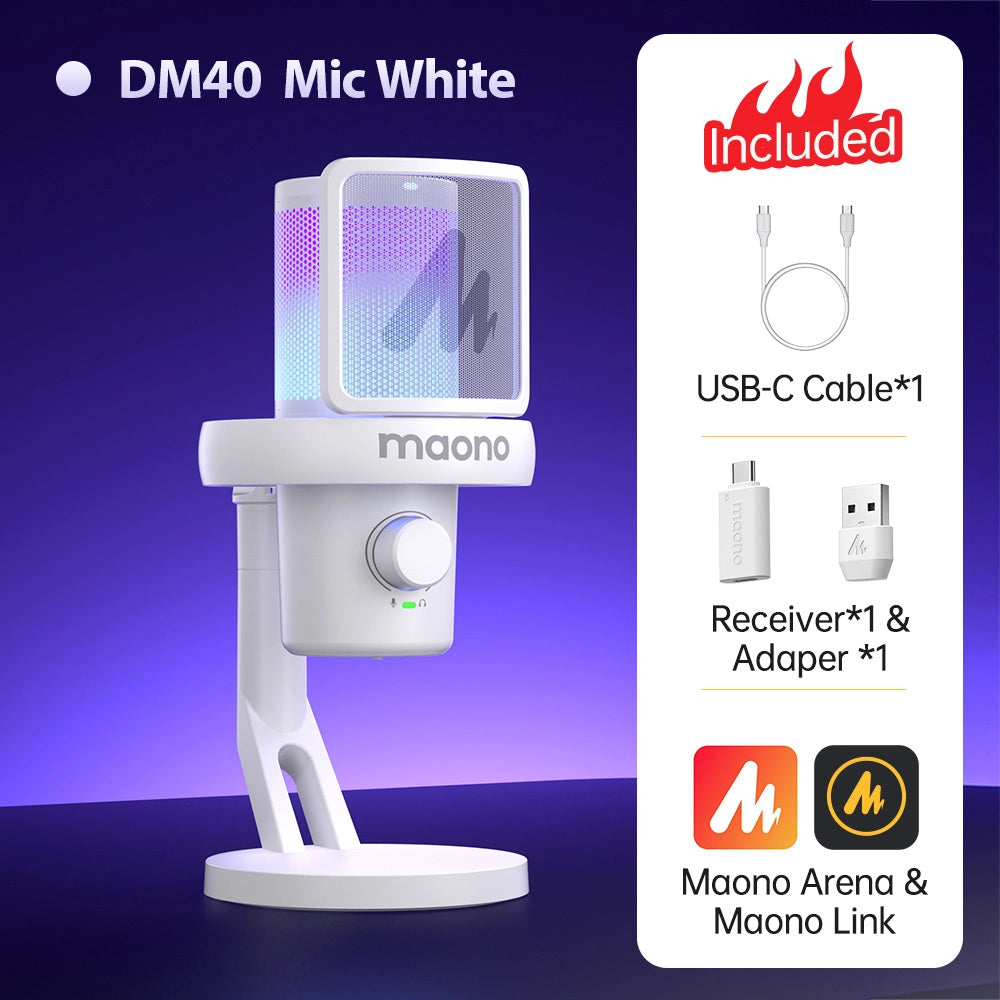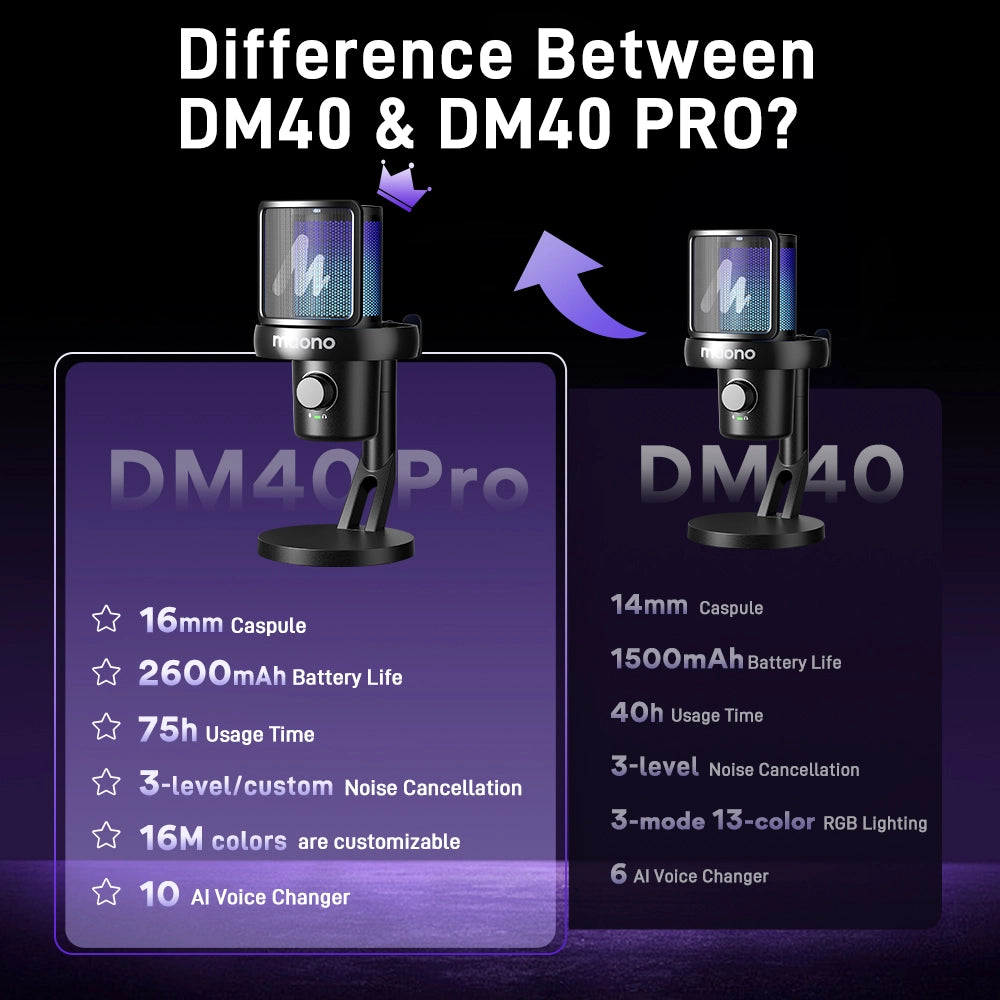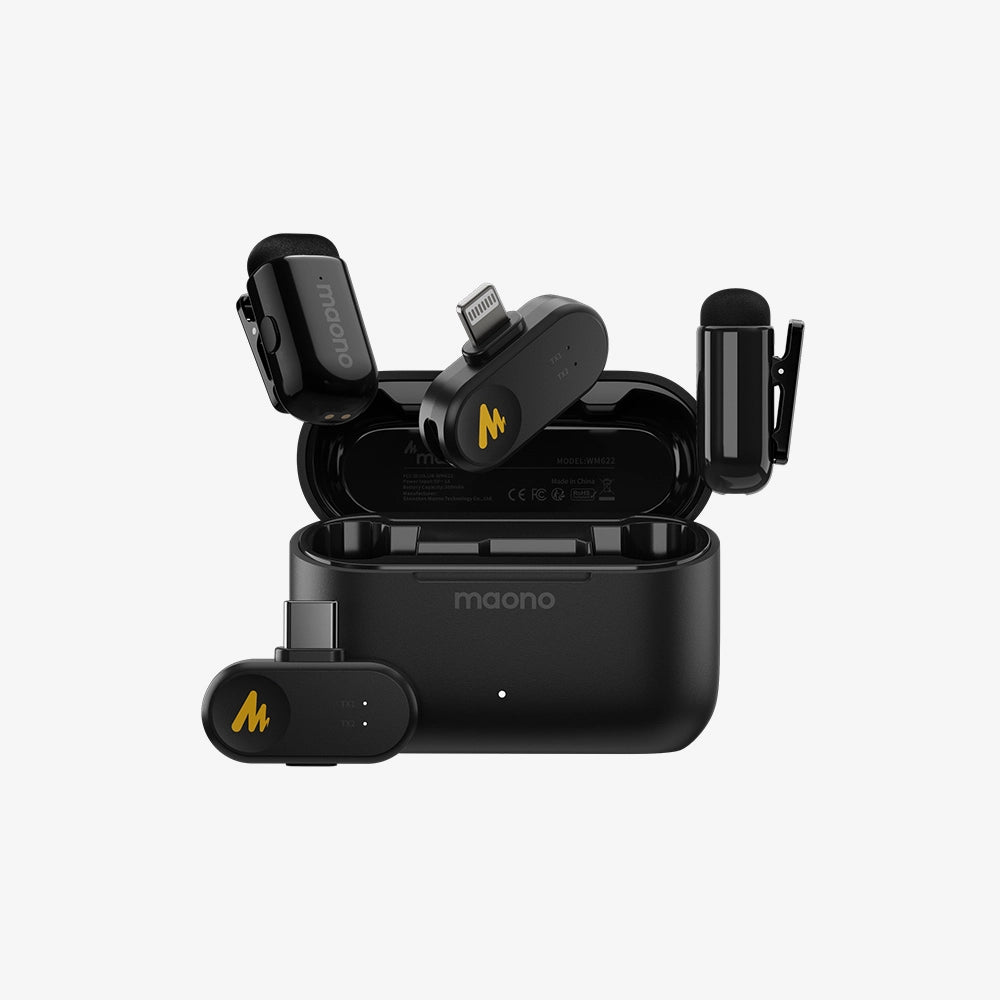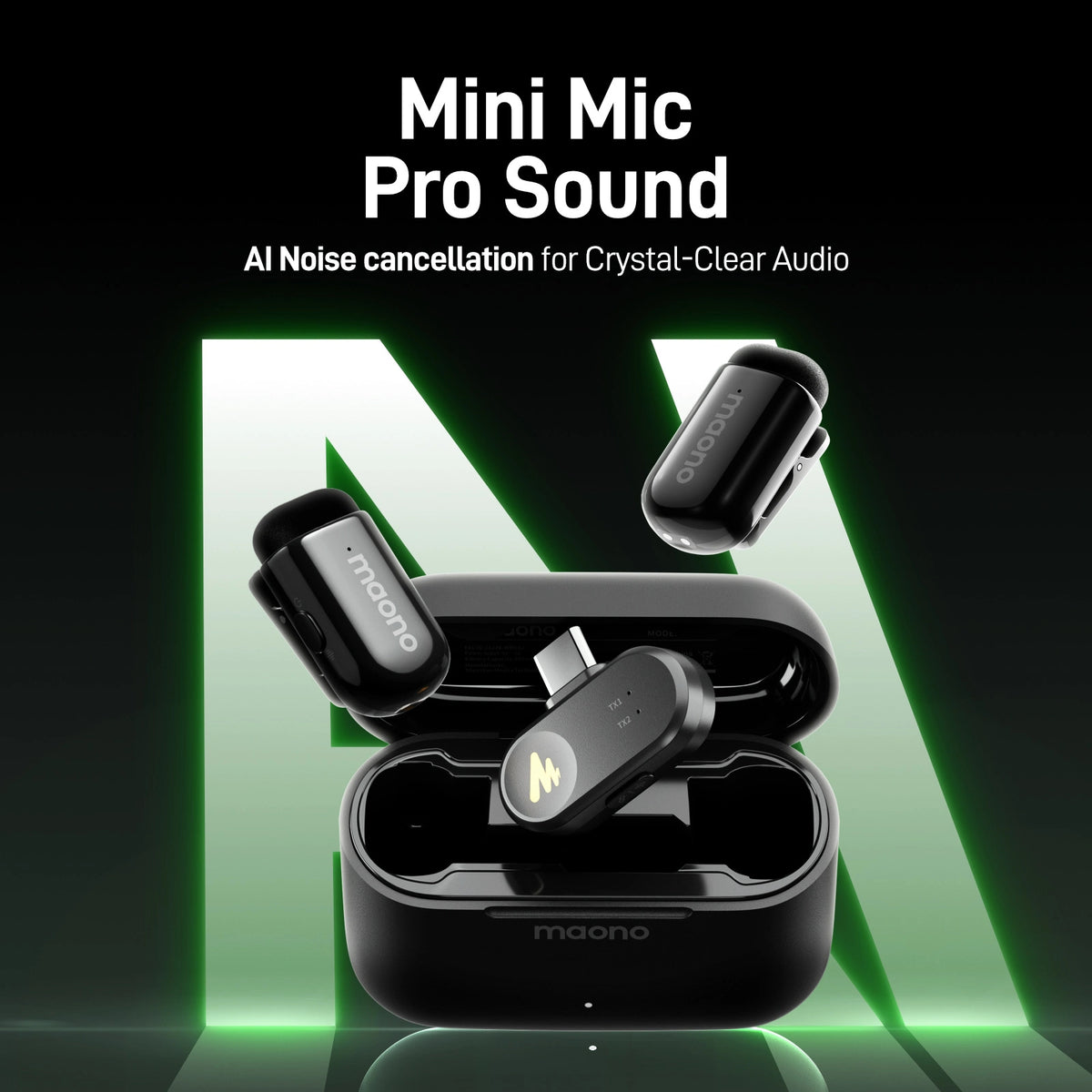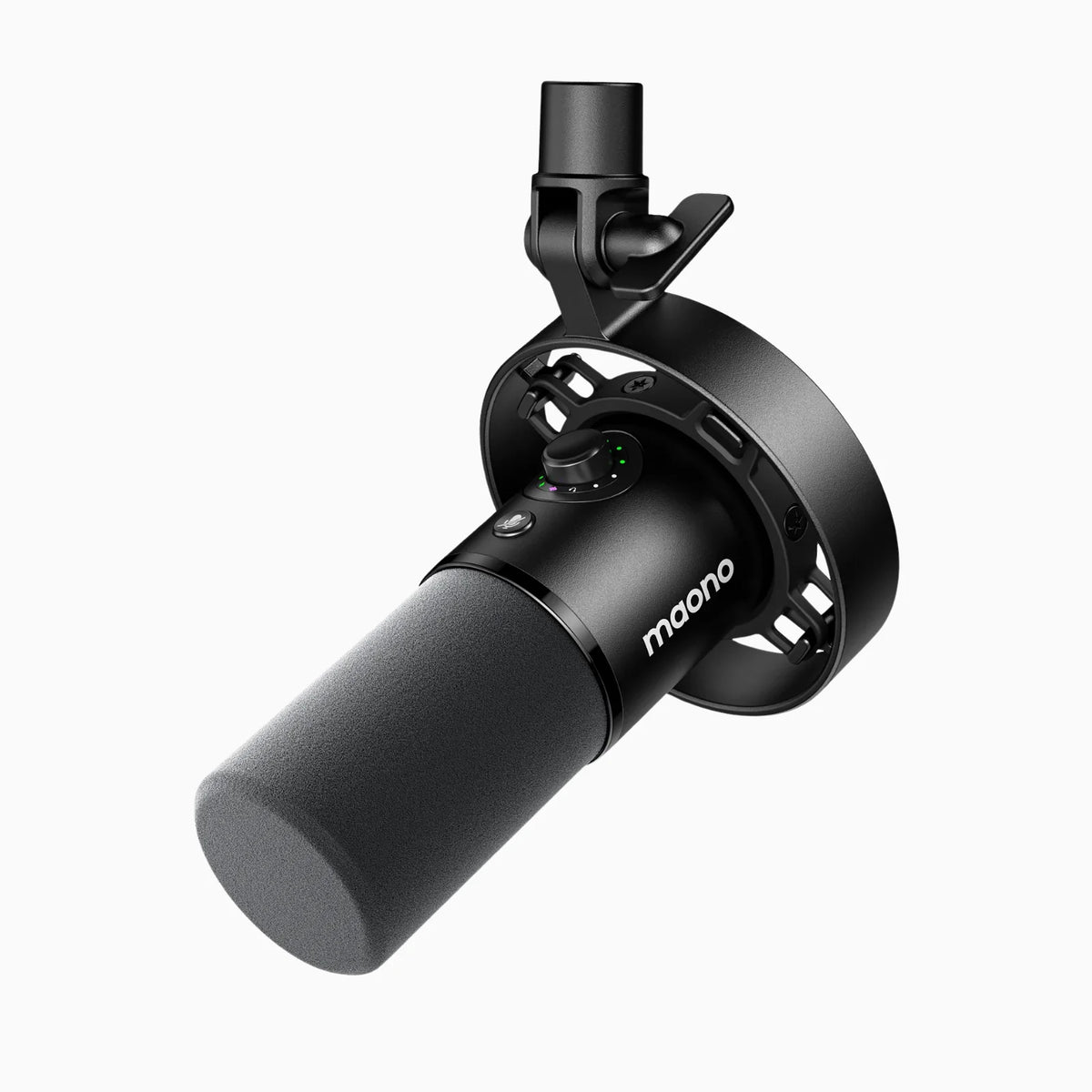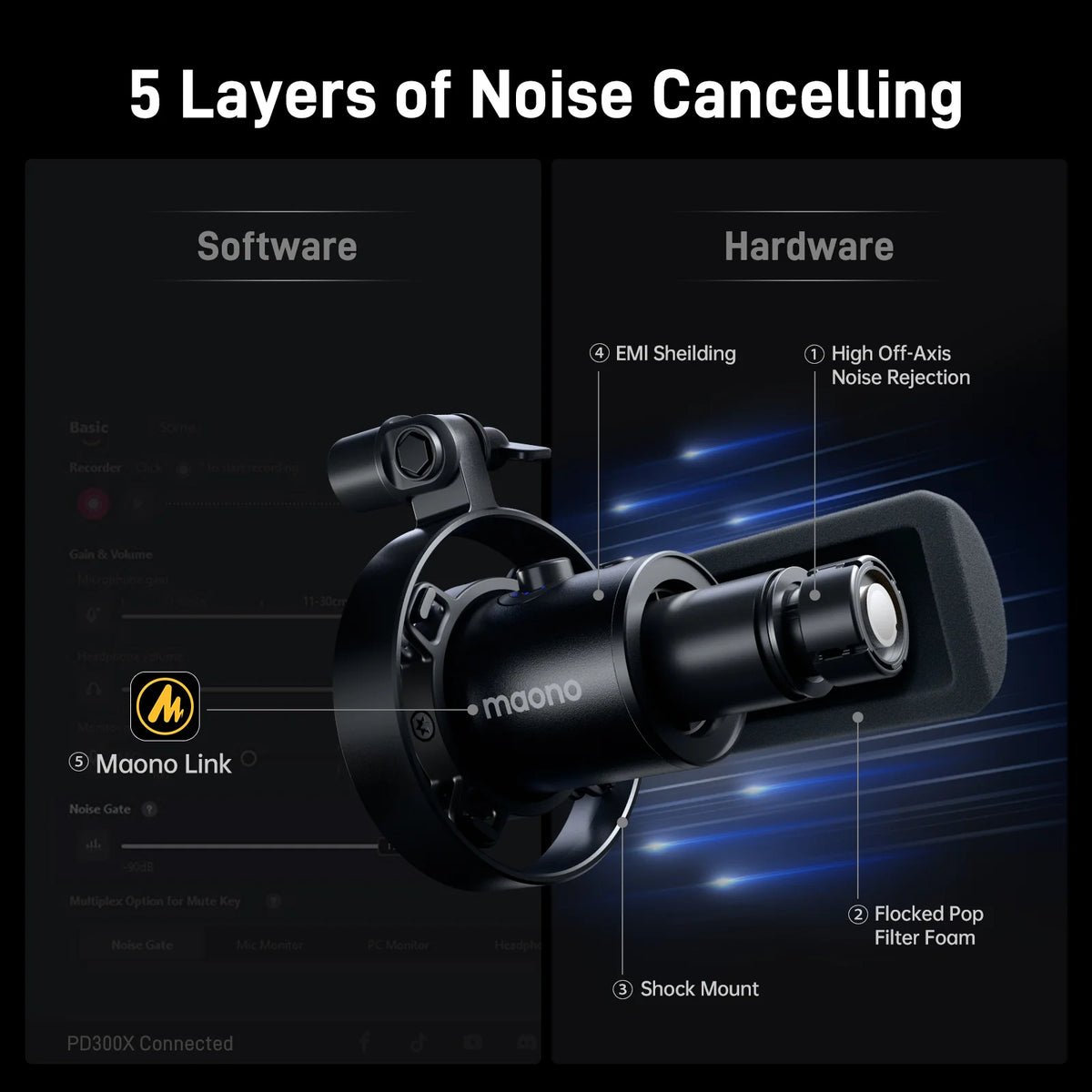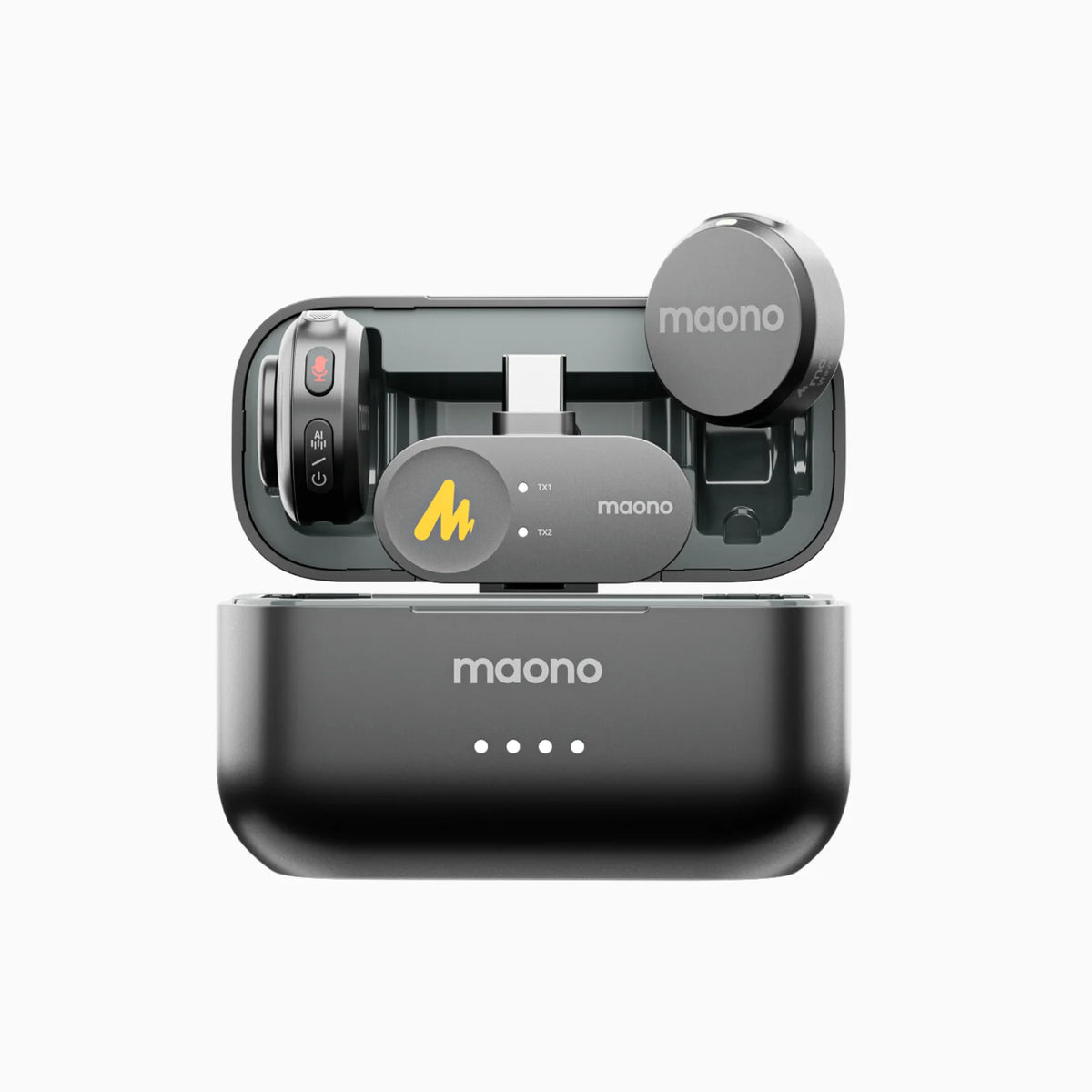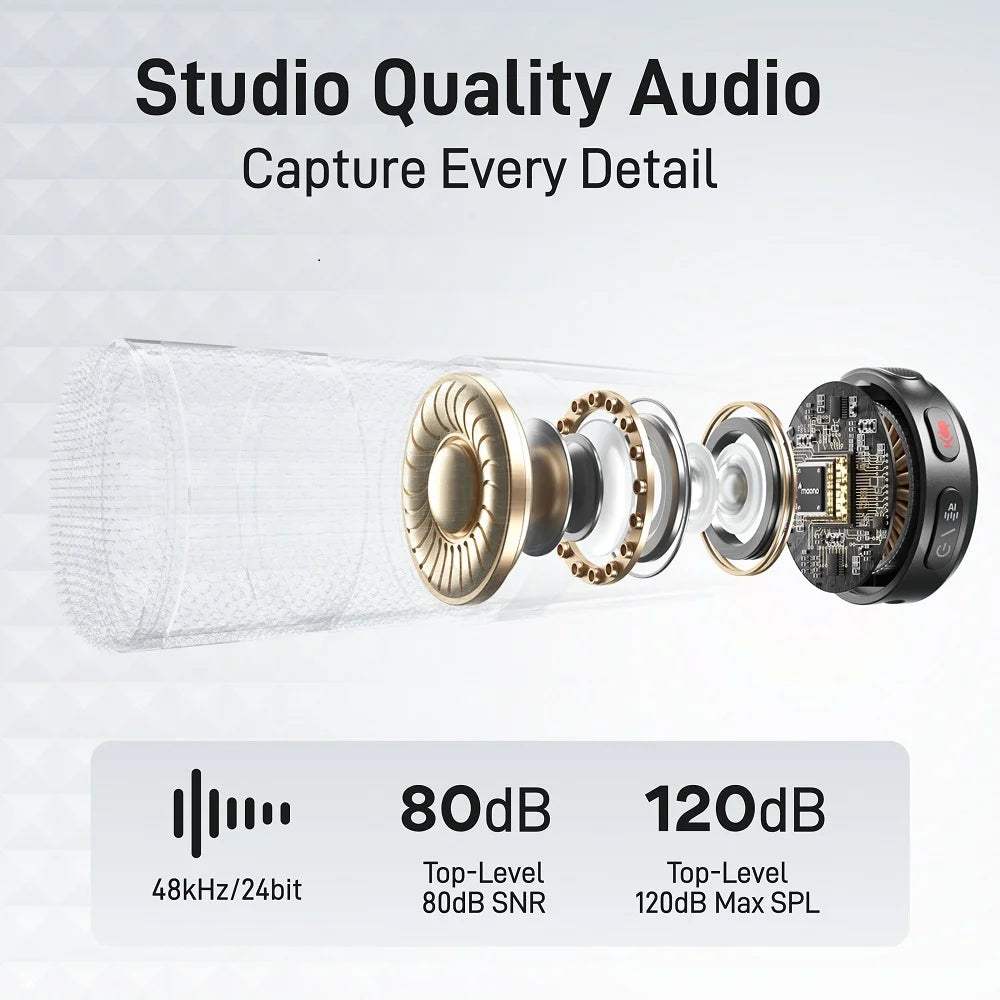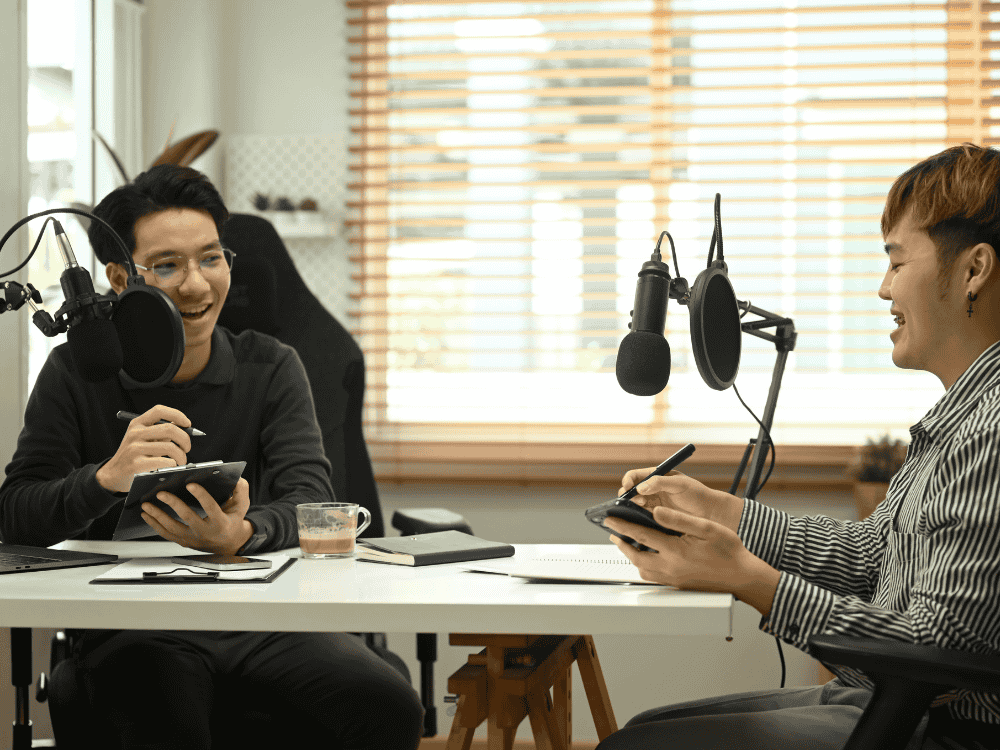Have you ever heard about the XLR microphone hype? Have you ever wondered how important an XLR microphone is in podcasting? First off, for those who don't know what an XLR microphone is or how it differs from a regular microphone, let's explore what an XLR microphone is.
What is an XLR Microphone?
An XLR microphone is a type of microphone that uses a three-pronged XLR connector to transmit audio signals. The XLR connector, known for its durability and ability to minimize noise interference, is a professional-grade connection standard in the audio industry. Unlike USB microphones, which connect directly to a computer via a USB port, XLR mics require an external audio interface or mixer to convert the analog signal into digital data.
XLR microphones are widely used in professional audio settings, including podcasting, broadcasting, music production, and live sound engineering, due to their superior audio quality and flexibility. The XLR format offers better sound fidelity, reduced latency, and the ability to integrate multiple microphones into a setup, making it a popular choice for podcasters and musicians alike.
Choosing the right XLR microphone can be the difference between professional, crystal-clear audio and recordings plagued by background noise or distortion. Whether you're starting a podcast, recording voice-overs, or streaming, the quality of your microphone will define your sound. XLR mics offer unmatched clarity and versatility, making them the top choice for seasoned audio engineers and podcasters. But you don't need to break the bank to get studio-quality results. In this guide, we'll explore the best budget XLR microphones and essential setup tips to help you sound your best without overspending.
Why Is It Important to Choose an XLR Microphone for Podcasting?
For podcasting, choosing the right microphone is crucial to producing clear and professional-quality audio. While USB microphones offer convenience for beginners, XLR microphones are the go-to option for more serious podcasters. XLR mics provide better audio clarity, lower noise, and a wider dynamic range compared to USB microphones. They are also versatile and can be used with external equipment like mixers and audio interfaces, allowing podcasters to have greater control over sound levels and quality.
For multi-person podcasts, XLR microphones are especially beneficial. Using multiple XLR mics through a mixer ensures that each participant has their microphone, making it easier to balance sound levels and avoid distortion. Also, XLR microphones offer superior durability, making them a long-term investment for podcasters looking to scale up their production.
Is a Cardioid XLR Microphone Good for Podcasting? Why?
Yes, a cardioid XLR microphone is ideal for podcasting. A cardioid polar pattern picks up sound from the front while rejecting sound from the sides and rear. This directional focus reduces background noise, making the voice clearer and more isolated. Since most podcasts are recorded in environments where external noise (like keyboard clicks, room ambiance, or other people) can interfere, using a cardioid XLR mic ensures that these distractions are minimized.
The combination of the cardioid pattern and the robust XLR connection enhances audio clarity and depth, delivering a professional podcasting experience.
Which is a Budget USB Condenser Mic with XLR?
While USB microphones are popular for their ease of use, some models offer both USB and XLR connectivity, providing flexibility. One notable budget option is the Audio-Technica ATR2100x-USB which costs around $47.95. This microphone allows users to plug directly into their computer using a USB or an XLR connection with an audio interface. It's a dynamic microphone that captures clear vocals and is perfect for podcasters who want a microphone that can transition from beginner to professional use.
How to Connect an XLR Microphone to My PC?
Connecting an XLR microphone to a PC requires a few key components, as XLR microphones don’t connect directly via USB. You’ll need:
- Audio Interface or Mixer: This device converts the analog signal from the XLR microphone into a digital signal that your computer can process. Popular interfaces include the Focusrite Scarlett 2i2 or Behringer UMC22.
- XLR Cable: The XLR microphone needs to connect to the interface via an XLR cable.
- Phantom Power (if using a condenser microphone): Some XLR condenser mics require phantom power (usually 48V) to function, which most audio interfaces provide.
- Software: Once connected, you’ll need recording software such as Audacity or Adobe Audition to capture the audio from the microphone.
What Is the Best XLR Microphone for Recording a Podcast or Voice-Over?
When choosing an XLR microphone for podcasting or voice-over work, factors like sound clarity, price, and ease of use come into play. The Shure SM7B is widely regarded as one of the best microphones for podcasting and voice-overs due to its warm and rich sound, making it a favorite among professionals. However, for those on a budget, the Audio-Technica AT2020 XLR or the Maono PM320 is an excellent condenser microphone offering great sound quality at an affordable price. Its broad frequency response captures detailed vocals, making it perfect for recording podcasts or voice-overs.
Where to Find a Good Budget XLR Mic?
Good XLR mics for streaming that are budget-friendly can be found through online retailers like Amazon, Sweetwater, Thomann, and Maono. These platforms often have a wide selection of both well-known brands and lesser-known, high-quality microphones. You can also find used microphones in excellent condition on platforms like eBay or Reverb, allowing you to get a professional-grade mic at a fraction of the price.
Five Best XLR Mics for Streaming and Recording a Podcast
1. Audio-Technica AT2020 XLR
The Audio-Technica AT2020 is one of the best budget condenser microphones. It offers excellent audio quality, especially for vocals and podcasting. With a wide frequency response and the ability to handle high sound pressure levels, it’s perfect for capturing both speech and music.
2. Shure SM58
Known as the industry standard for live vocal performances, the Shure SM58 is also a fantastic choice for podcasting. Its dynamic build makes it durable, and its cardioid pattern ensures background noise is reduced while focusing on the speaker's voice.
3. Maono PD400X

The Maono PD400X is a versatile USB & XLR microphone designed specifically for podcasting and streaming. The dual connection options make it accessible for beginners (via USB) and professionals (via XLR). The USB connection allows for plug-and-play use with computers, while the XLR option is perfect for integration into more advanced audio setups with interfaces or mixers.
It offers great sound clarity, and noise reduction, and is suitable for beginners and intermediate podcasters. This microphone features a cardioid polar pattern, designed to pick up sound from the front while minimizing noise from the sides and rear. The cardioid pattern is ideal for isolating the speaker’s voice, reducing ambient noise, and delivering clear, focused audio—perfect for podcasting, streaming, and content creation in noisy environments.
4. Maono PM320

The Maono PM320 has a frequency response of 20Hz to 20kHz and uses a cardioid polar pattern, which allows it to capture a full range of sound, from deep bass to crisp highs. This wide frequency range makes it ideal for vocals, podcasting, and even instrument recording, delivering clear and natural sound quality.
PM320 features XLR connectivity, requiring an audio interface or mixer for operation. This ensures professional-grade audio quality, making it a great choice for those seeking an upgrade from USB mics. The XLR connection reduces interference and offers cleaner, more reliable sound transmission. It features a built-in pop filter, a chock mount to minimize vibrations and handle noise, allowing for stable, noise-free recordings.
5. Rode Procaster
The Rode Procaster is a professional broadcast-quality dynamic microphone that excels in speech applications. With an internal pop filter and a cardioid pattern, it reduces plosive sounds and background noise, delivering rich and warm voice recordings.
Can a USB Mic Be as Good as an XLR? What Are the Similarities and Differences Between USB and XLR Microphones?
While USB microphones are convenient and suitable for beginners, XLR microphones are generally considered superior in terms of sound quality, durability, and flexibility. Here are the key differences:
- Sound Quality: XLR mics tend to offer better sound quality due to external audio interfaces and less latency.
- Ease of Use: USB mics are plug-and-play, ideal for beginners, while XLR mics require additional equipment like an audio interface.
- Flexibility: XLR setups allow for more professional adjustments and the use of multiple microphones in one setup, making them more versatile for advanced users.
In summary, USB microphones are great for simplicity, but XLR microphones offer more professional and refined audio, especially when paired with quality equipment.
FAQs
1. How to Handle the Maintenance and Troubleshooting for an XLR Microphone?
To maintain your XLR microphone, store it in a dry place to avoid moisture damage, regularly clean the grille with a soft brush, and keep the XLR cables untangled to prevent wear. If troubleshooting is required, check connections, ensure phantom power is on for condenser mics, and test the audio interface for issues.
2. Do You Need to Use Any Specific Accessories with an XLR Microphone?
Yes, some useful accessories include:
- Pop Filters: To reduce plosive sounds (e.g., "p" and "b" sounds).
- Shock Mounts: To minimize vibrations and handling noise.
- Boom Arms: To position the microphone at a comfortable angle.
3. What Is the Simplest Process for Selecting an XLR Microphone?
To select an XLR microphone:
- Determine your budget.
- Decide whether you need a dynamic or condenser mic based on your recording environment.
- Look for a cardioid polar pattern for voice isolation.
- Read reviews and listen to sample recordings online to ensure the sound profile fits your needs.
Conclusion
Choosing an XLR microphone for podcasting, streaming, or voice-over work can significantly improve your audio quality. While USB microphones are useful for beginners, XLR microphones provide superior sound clarity, durability, and flexibility. By considering budget options like the Audio-Technica AT2020 or Maono PD400X, and understanding the basic setup, even beginners can achieve professional-sounding results. With the right accessories and setup, you'll be ready to elevate your podcast or streaming project to new heights.




